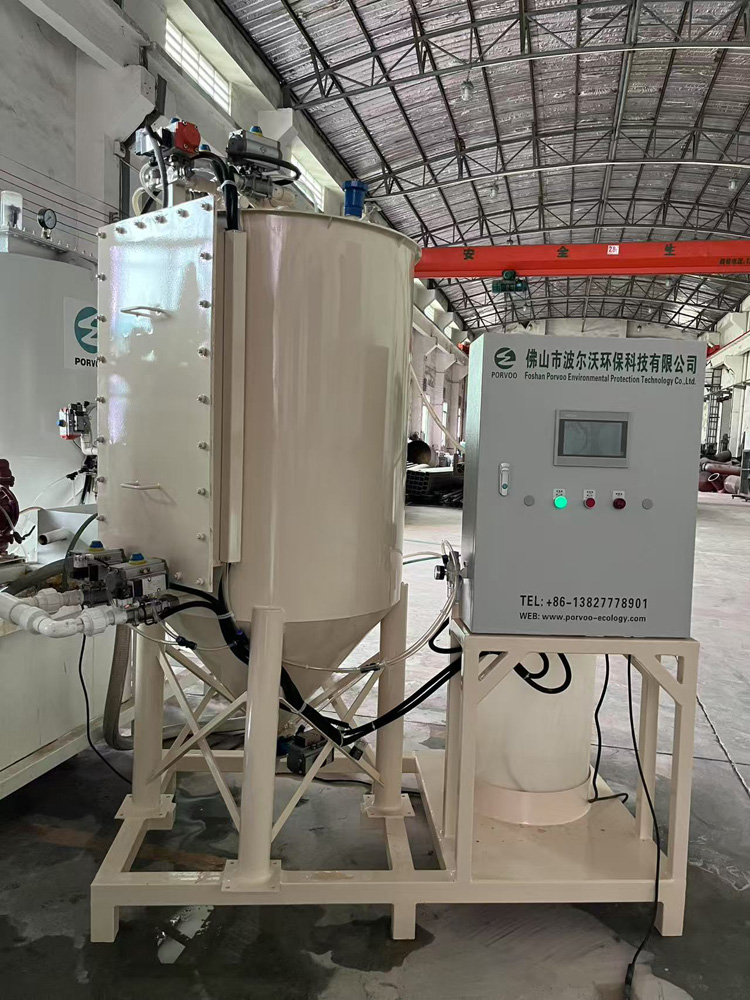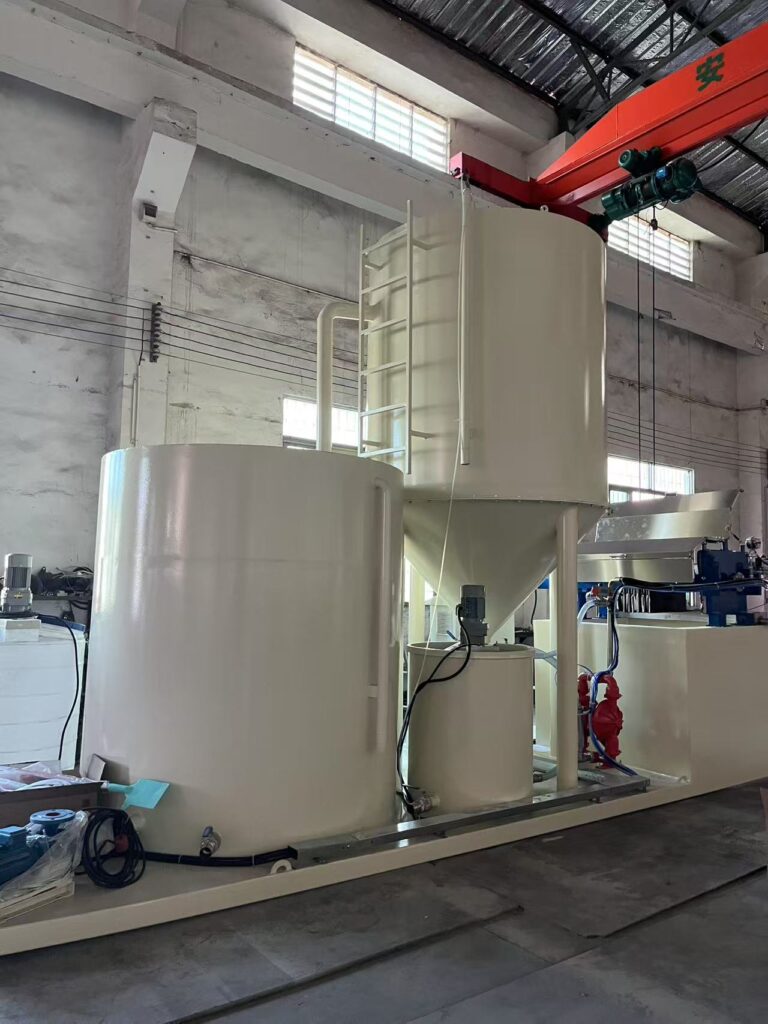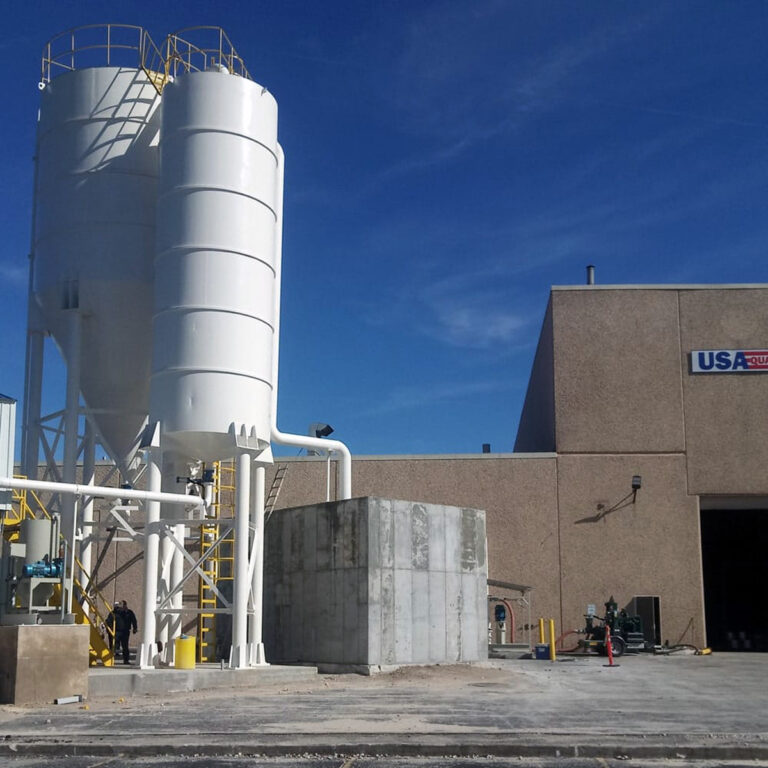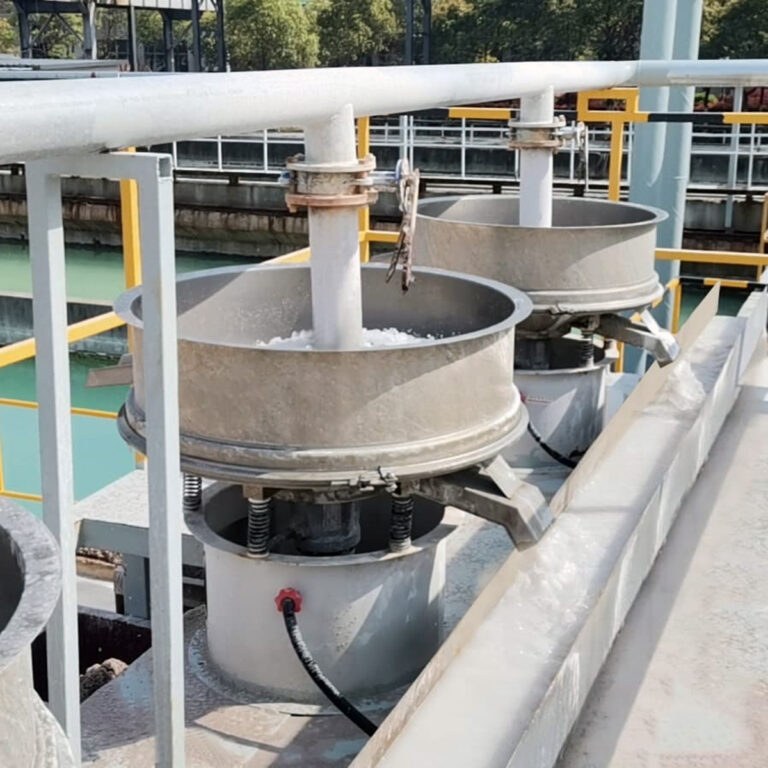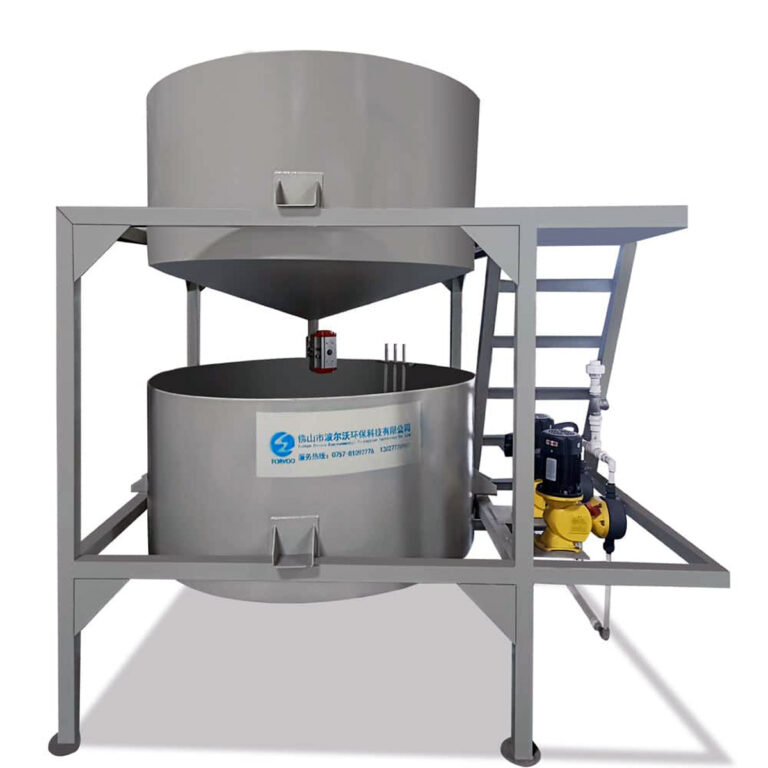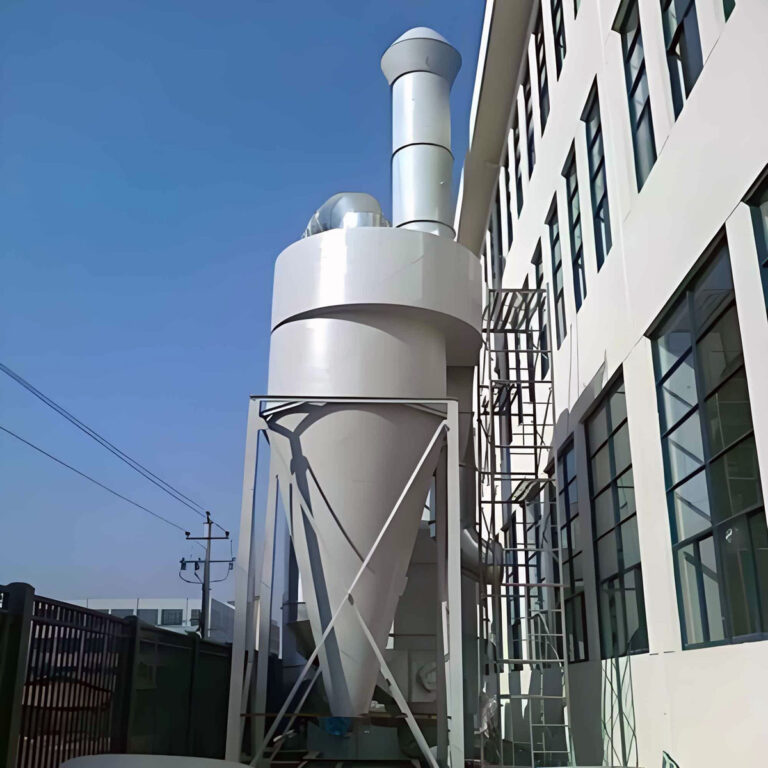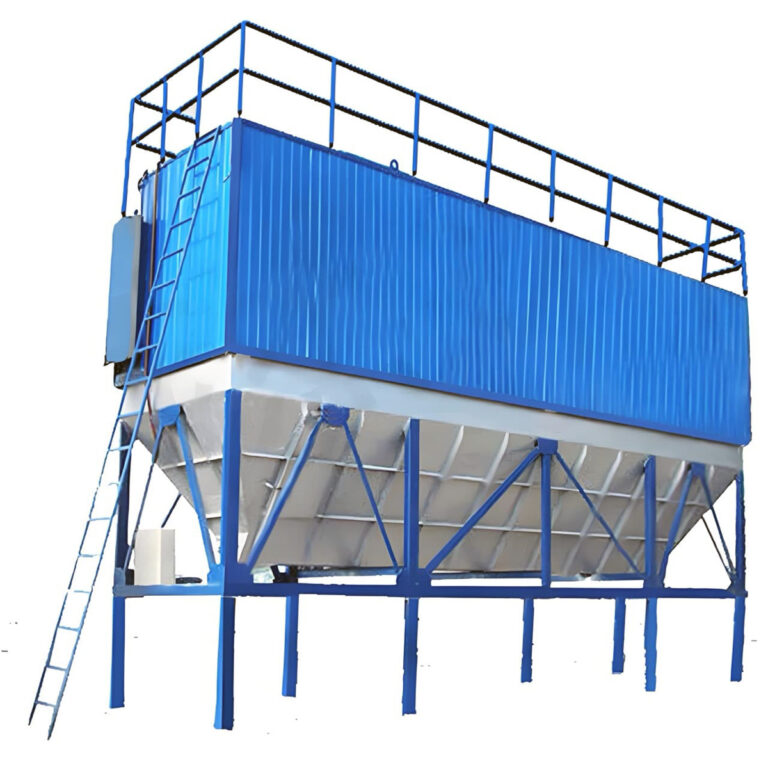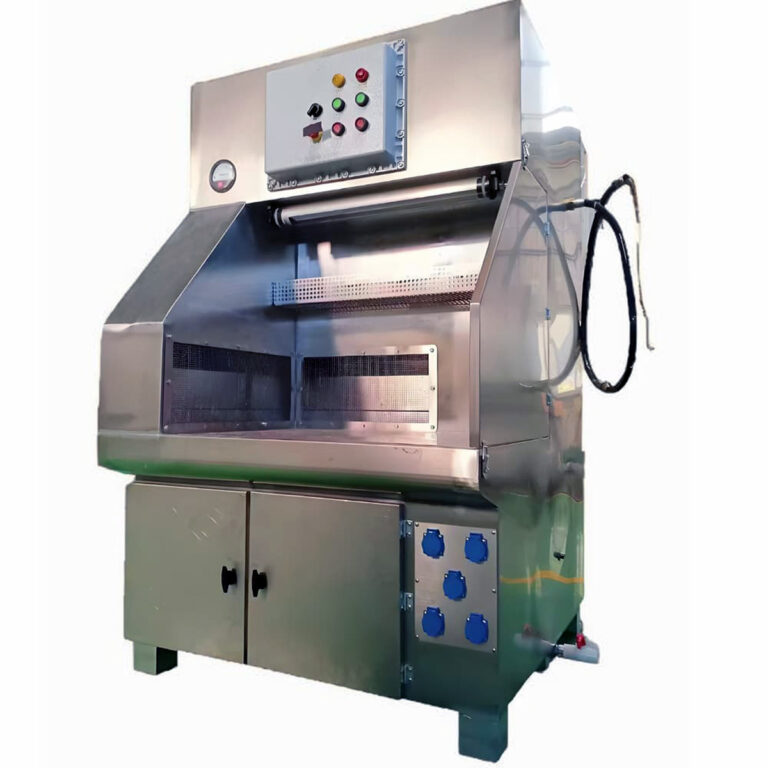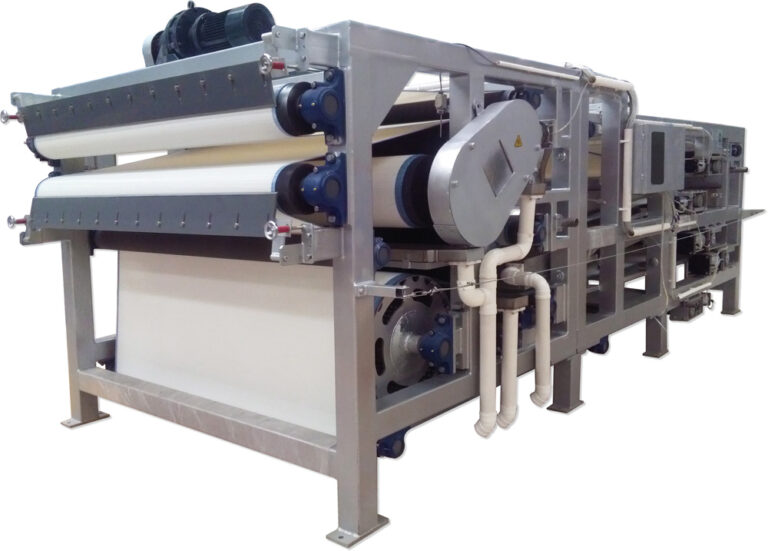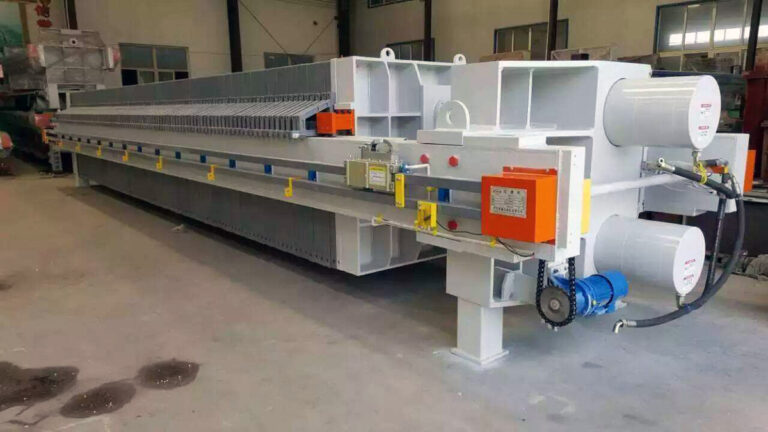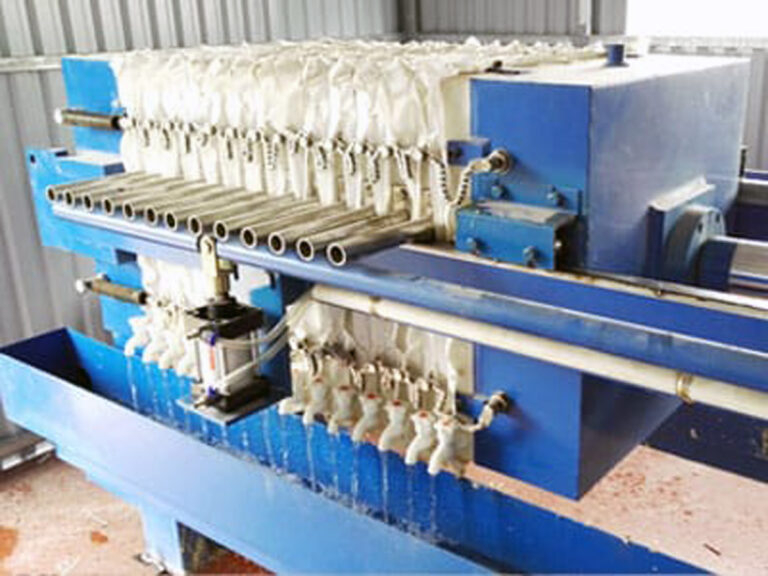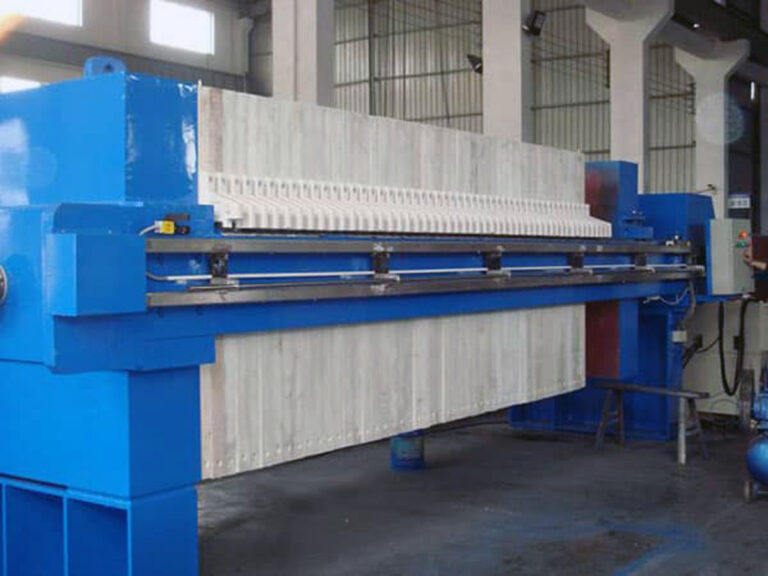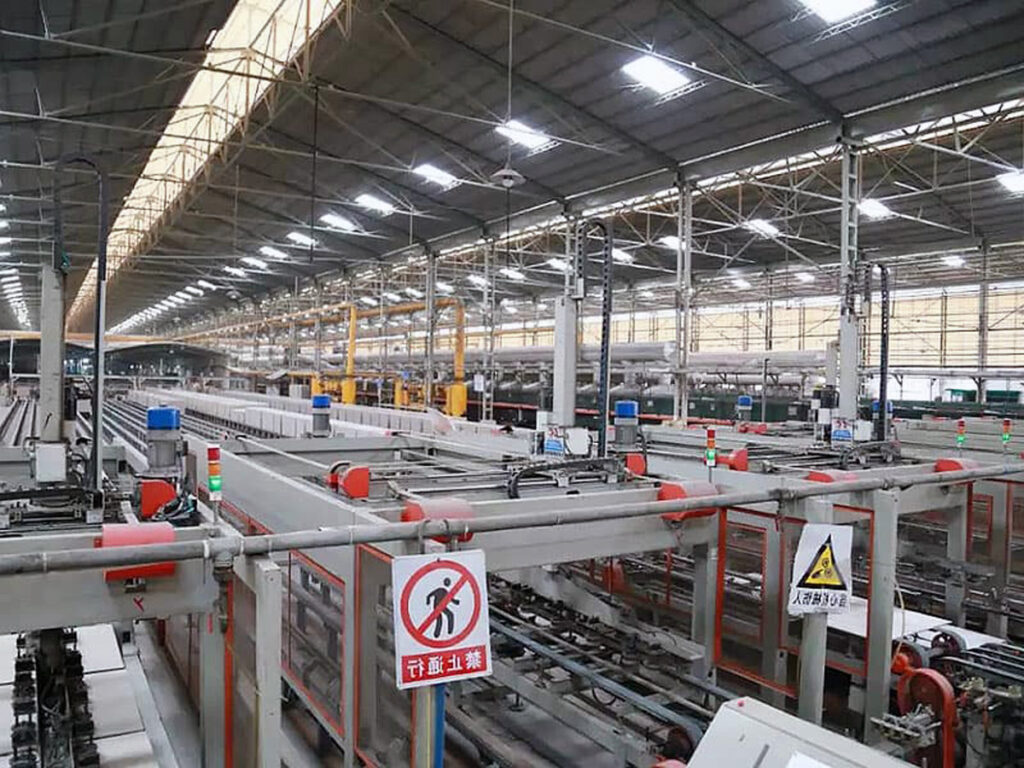Manufacturing facilities worldwide face an escalating crisis: water scarcity, stricter environmental regulations, and rising operational costs are forcing industries to fundamentally rethink their water management strategies. According to the World Economic Forum, industrial water consumption accounts for 22% of global water usage, yet up to 80% of industrial wastewater is discharged without adequate treatment.
This negligence costs industries billions annually through regulatory fines, equipment damage, and operational inefficiencies. Companies that fail to implement robust industrial water systems risk production shutdowns, environmental violations, and irreparable damage to their reputation. The consequences extend beyond immediate financial losses—they threaten long-term operational sustainability.
This comprehensive guide provides the technical knowledge and strategic insights necessary to navigate the complex landscape of industrial water management. We’ll explore cutting-edge treatment technologies, regulatory compliance strategies, and cost-effective implementation approaches that transform water challenges into competitive advantages. Whether you’re evaluating system upgrades or planning new installations, this analysis delivers the expertise needed to make informed decisions.
What Are Industrial Water Systems and Their Core Components?
Industrial water systems represent sophisticated networks of equipment, processes, and controls designed to manage water throughout manufacturing operations. These systems encompass everything from initial water intake and treatment to final discharge or recycling, forming the backbone of sustainable industrial operations.
Primary System Components and Infrastructure
Modern industrial water systems integrate multiple treatment stages, each serving specific functions. Pre-treatment components include screening systems, sedimentation tanks, and pH adjustment units that prepare raw water for subsequent processing. Primary treatment stages typically involve coagulation, flocculation, and clarification processes that remove suspended solids and initial contaminants.
The heart of most systems lies in secondary treatment technologies. PORVOO specializes in advanced treatment solutions that address complex industrial requirements. These systems often incorporate biological treatment reactors, membrane bioreactors, and advanced oxidation processes depending on specific industry needs.
Control systems represent the nervous system of modern water treatment facilities. SCADA (Supervisory Control and Data Acquisition) systems monitor real-time parameters including flow rates, pH levels, dissolved oxygen content, and turbidity measurements. These systems enable operators to maintain optimal treatment conditions while identifying potential issues before they escalate.
Water Quality Standards and Regulations
Industrial water quality standards vary significantly across industries and geographical regions. The EPA’s National Pollutant Discharge Elimination System (NPDES) establishes baseline requirements for industrial discharge, with industry-specific guidelines for sectors like pharmaceuticals, food processing, and chemical manufacturing.
Key parameters monitored include biochemical oxygen demand (BOD), chemical oxygen demand (COD), total suspended solids (TSS), and specific contaminants relevant to each industry. For instance, pharmaceutical facilities must monitor antibiotic residues and hormone compounds, while metal processing plants focus on heavy metal concentrations and cyanide levels.
Compliance costs can be substantial. According to EPA data, industrial facilities spend approximately $14 billion annually on water pollution control, with non-compliance penalties averaging $50,000 per violation. However, facilities with comprehensive treatment systems typically achieve 95-99% compliance rates while reducing long-term operational costs.
Integration with Manufacturing Processes
Successful industrial water treatment technology requires seamless integration with existing manufacturing processes. This integration involves understanding water usage patterns, identifying contamination sources, and designing treatment systems that accommodate production schedules and quality requirements.
Process water applications demand specific quality standards. Boiler feedwater requires extremely low mineral content to prevent scaling and corrosion, typically achieving conductivity levels below 1 µS/cm. Cooling tower makeup water needs balanced chemistry to prevent biological growth and mineral precipitation, while process-specific applications may require ultrapure water meeting semiconductor or pharmaceutical standards.
Why Do Industries Need Specialized Water Treatment Technology?
The complexity of industrial water challenges demands specialized solutions far beyond conventional municipal treatment approaches. Industries generate unique contaminant profiles, operate under stringent quality requirements, and face regulatory pressures that necessitate advanced treatment technologies.
Contamination Sources and Industry-Specific Challenges
Industrial facilities introduce diverse contaminants through manufacturing processes, cleaning operations, and equipment maintenance. Chemical manufacturing plants generate organic solvents, catalyst residues, and complex reaction byproducts. Food processing facilities produce high-strength organic wastewater with elevated BOD levels often exceeding 2,000 mg/L.
Pharmaceutical manufacturing presents particularly challenging scenarios. Active pharmaceutical ingredients (APIs) in wastewater can disrupt biological treatment processes and pose environmental risks. A recent study by the International Water Association found that 70% of pharmaceutical manufacturing sites require specialized treatment technologies to achieve discharge standards.
Metal finishing operations introduce heavy metals, acids, and alkaline solutions that can severely damage conventional treatment systems. These facilities often require specialized technologies like ion exchange, electrochemical treatment, or membrane filtration to achieve acceptable discharge levels.
Environmental Compliance Requirements
Environmental regulations continue tightening across all industrial sectors. The European Union’s Water Framework Directive mandates “good ecological status” for all water bodies by 2027, directly impacting industrial discharge standards. Similarly, China’s revised Environmental Protection Law imposes severe penalties for non-compliance, including facility shutdowns and criminal charges for executives.
In our experience working with manufacturing facilities, regulatory compliance costs typically represent 15-25% of total water treatment expenses. However, facilities investing in comprehensive industrial wastewater treatment solutions often achieve compliance rates exceeding 98% while reducing long-term operational costs.
Zero liquid discharge (ZLD) requirements are becoming increasingly common in water-scarce regions. These regulations mandate complete water recovery and reuse, eliminating liquid waste streams entirely. While ZLD systems require substantial capital investment, they provide complete regulatory certainty and can reduce operational costs by 30-40% in high water-cost regions.
Cost Implications of Poor Water Management
Inadequate water management creates cascading financial impacts throughout industrial operations. Equipment damage from poor water quality can cost manufacturing facilities millions annually. Scaling in heat exchangers reduces efficiency by 15-20%, while corrosion damage to piping systems often requires complete replacement within 5-7 years.
| Cost Category | Annual Impact | Prevention Cost | ROI Timeline |
|---|---|---|---|
| Equipment Damage | $500K-2M | $100K-300K | 12-18 months |
| Regulatory Fines | $50K-500K | $200K-400K | 6-12 months |
| Production Downtime | $1M-5M | $300K-600K | 3-6 months |
| Water Costs | $200K-1M | $250K-500K | 18-24 months |
Production downtime represents the most significant financial risk. Unplanned shutdowns due to water system failures cost manufacturers an average of $50,000 per hour in lost production. Proactive investment in reliable water treatment systems typically reduces unplanned downtime by 60-80%.
How Do Different Industrial Water Processing Methods Compare?
Industrial water processing encompasses multiple treatment approaches, each offering distinct advantages for specific applications. Understanding these differences enables informed technology selection and optimal system design.
Physical Treatment Technologies
Physical treatment methods rely on mechanical processes to remove contaminants without chemical addition. Screening systems effectively remove large debris and suspended solids, typically achieving 70-90% removal efficiency for particles larger than 1mm. Sedimentation tanks utilize gravity separation to remove settleable solids, with properly designed systems achieving 85-95% suspended solids removal.
Membrane filtration represents the most advanced physical treatment technology. Microfiltration systems effectively remove bacteria and suspended particles larger than 0.1 microns, while ultrafiltration can eliminate viruses and large molecules. Reverse osmosis systems achieve 95-99% removal of dissolved salts and most organic contaminants.
Flotation systems excel in removing oil, grease, and low-density particles. Dissolved air flotation (DAF) units commonly achieve 95-98% oil removal efficiency and are particularly effective for food processing and petrochemical applications. These systems require minimal chemical addition and produce relatively dry sludge for disposal.
Chemical Treatment Approaches
Chemical treatment methods utilize reagents to neutralize, precipitate, or oxidize contaminants. Coagulation and flocculation processes destabilize suspended particles, enabling effective removal through sedimentation or filtration. Proper chemical dosing typically improves suspended solids removal by 20-30% compared to physical treatment alone.
Precipitation processes target dissolved metals and specific contaminants. Hydroxide precipitation effectively removes most heavy metals to levels below 1 mg/L, while sulfide precipitation can achieve even lower concentrations for metals like cadmium and mercury. However, these processes generate significant sludge volumes requiring costly disposal.
Advanced oxidation processes (AOPs) utilize powerful oxidants like ozone, hydrogen peroxide, or UV light to destroy complex organic contaminants. These technologies prove particularly effective for pharmaceutical and chemical manufacturing wastewater, achieving 90-99% removal of recalcitrant compounds.
Biological Treatment Systems
Biological treatment harnesses microorganisms to degrade organic contaminants. Activated sludge systems represent the most common approach, typically achieving 85-95% BOD removal for readily biodegradable waste streams. These systems require careful control of dissolved oxygen, pH, and nutrient levels to maintain optimal microbial activity.
Membrane bioreactors (MBRs) combine biological treatment with membrane filtration, producing high-quality effluent suitable for reuse applications. MBR systems achieve 99%+ removal of suspended solids and bacteria while maintaining smaller footprints than conventional activated sludge systems.
Anaerobic treatment systems excel for high-strength organic waste streams. These systems produce methane biogas as a valuable byproduct while achieving 80-90% COD removal. A food processing facility we worked with reduced energy costs by 40% through biogas recovery from anaerobic treatment systems.
What Are the Key Industrial Water Purification Methods?
Advanced purification methods enable industries to meet stringent water quality requirements while maximizing reuse opportunities. These technologies address specific contaminants and applications that conventional treatment cannot handle effectively.
Membrane Filtration Technologies
Membrane technologies provide precise contaminant removal through physical barriers at the molecular level. Reverse osmosis systems achieve 95-99% removal of dissolved salts, organics, and most contaminants, producing water suitable for boiler feedwater and process applications. These systems typically operate at pressures between 150-1,200 psi depending on membrane type and water quality requirements.
Nanofiltration membranes offer selective removal of specific contaminants while maintaining lower operating pressures than reverse osmosis. These systems effectively remove multivalent ions, organic compounds, and color while allowing monovalent salts to pass through partially. This selectivity makes nanofiltration ideal for water softening and specific contaminant removal applications.
Forward osmosis represents an emerging technology that utilizes natural osmotic pressure differentials to drive water purification. While still in development for industrial applications, this technology shows promise for high-salinity wastewater treatment and may reduce energy consumption by 30-50% compared to reverse osmosis.
Advanced Oxidation Processes
Advanced oxidation processes generate hydroxyl radicals—extremely powerful oxidants that can destroy virtually any organic contaminant. UV/hydrogen peroxide systems effectively treat pharmaceutical wastewater, achieving 90-99% removal of active pharmaceutical ingredients and endocrine-disrupting compounds.
Ozone treatment provides rapid oxidation of organic contaminants while simultaneously achieving disinfection. Ozone systems require on-site generation and careful control due to safety concerns, but they leave no chemical residuals and can reduce chemical oxygen demand by 60-80% in appropriate applications.
Electrochemical oxidation utilizes electrical current to generate oxidants directly at electrode surfaces. These systems prove particularly effective for metal finishing wastewater, achieving heavy metal removal while destroying complex organic compounds. Recent installations have demonstrated 95%+ treatment efficiency with minimal chemical consumption.
Ion Exchange and Adsorption Systems
Ion exchange systems provide selective removal of specific ions through resin-based exchange processes. These systems excel at water softening, deionization, and removal of trace contaminants like nitrates or specific heavy metals. Properly designed systems can achieve water quality below 1 ppm for most targeted contaminants.
Activated carbon adsorption effectively removes organic compounds, chlorine, and taste/odor compounds. Granular activated carbon systems provide cost-effective treatment for many industrial applications, typically achieving 80-95% removal of organic contaminants. However, these systems require regular regeneration or replacement to maintain effectiveness.
Specialized adsorbents target specific contaminants. Ion-specific resins can remove trace metals to ppb levels, while specialized media effectively remove fluoride, arsenic, or other problematic compounds. A semiconductor manufacturing facility achieved 99.9% removal of trace metals using specialized ion exchange resins in their advanced water treatment systems.
How to Select the Right Water Treatment System Basics for Your Industry?
Selecting optimal water treatment technology requires comprehensive analysis of water quality requirements, regulatory constraints, and economic factors. This process involves systematic evaluation of treatment alternatives and long-term operational considerations.
Assessment Criteria and Performance Metrics
Water quality analysis forms the foundation of system selection. Comprehensive testing should include conventional parameters (pH, turbidity, BOD, COD, TSS) plus industry-specific contaminants. Pharmaceutical facilities require analysis for active compounds and endocrine disruptors, while food processing plants need detailed organic loading and pathogen testing.
Flow rate variations significantly impact system design and selection. Many industrial facilities experience 3:1 or higher flow variations between peak and minimum conditions. Treatment systems must accommodate these variations while maintaining consistent effluent quality. Equalization tanks often prove cost-effective for managing flow variations.
| Treatment Technology | Capital Cost | O&M Cost | Efficiency | Reliability |
|---|---|---|---|---|
| Activated Sludge | Low | Medium | 85-95% | High |
| Membrane Bioreactor | High | Medium | 95-99% | Medium |
| Reverse Osmosis | Medium | High | 95-99% | High |
| Advanced Oxidation | High | High | 90-99% | Medium |
Treatment efficiency requirements vary dramatically across applications. Discharge to municipal sewers typically requires 85-95% BOD removal, while direct environmental discharge may mandate 98%+ removal efficiency. Reuse applications often require near-complete contaminant removal to prevent process interference or product contamination.
Scalability and Maintenance Considerations
System scalability enables facilities to accommodate production growth without complete system replacement. Modular treatment designs allow capacity expansion through additional treatment trains rather than complete reconstruction. This approach typically reduces expansion costs by 40-60% compared to single-train systems.
Maintenance requirements directly impact operational costs and system reliability. Biological treatment systems require daily monitoring and periodic biosolids removal, while membrane systems need regular cleaning and periodic replacement. Automated monitoring and control systems can reduce maintenance labor by 30-50% while improving system reliability.
Spare parts availability and technical support prove crucial for continuous operation. Systems utilizing proprietary components or specialized equipment may face extended downtime during equipment failures. Standardized equipment with multiple suppliers typically provides better long-term reliability and lower maintenance costs.
Return on Investment Analysis
ROI calculations must consider both direct treatment costs and avoided expenses. Direct costs include capital investment, operating expenses, and maintenance requirements. Avoided costs encompass regulatory compliance, equipment protection, and water reuse benefits.
Energy consumption represents a significant operational expense for many treatment technologies. Membrane systems typically consume 3-8 kWh per 1,000 gallons treated, while biological systems require 1-3 kWh per 1,000 gallons. Energy recovery systems can reduce consumption by 20-40% in appropriate applications.
Water reuse benefits provide substantial value in many applications. Industrial process water costs $2-8 per 1,000 gallons in most regions, while treated wastewater can often be reused at treatment costs below $3 per 1,000 gallons. A chemical manufacturing facility we worked with achieved 18-month payback through water reuse implementation.
What Are the Latest Innovations in Industrial Water Treatment Technology?
Technological advancement continues transforming industrial water treatment through digital integration, sustainable processes, and enhanced efficiency. These innovations address traditional challenges while creating new opportunities for operational optimization.
Smart Monitoring and Automation
Internet of Things (IoT) sensors enable real-time monitoring of treatment performance parameters. Advanced sensor networks can track pH, dissolved oxygen, turbidity, and specific contaminants continuously, providing operators with immediate feedback on system performance. These systems typically improve treatment efficiency by 10-15% while reducing chemical consumption.
Artificial intelligence applications optimize treatment processes through predictive analytics and automated control. Machine learning algorithms analyze historical data to predict equipment failures, optimize chemical dosing, and adjust treatment parameters proactively. Early implementations have demonstrated 25-35% reduction in unplanned downtime.
Digital twin technology creates virtual replicas of treatment systems for simulation and optimization. These models enable operators to test operational changes virtually before implementation, reducing risks and optimizing performance. Digital twins also facilitate remote monitoring and troubleshooting, reducing site visits by 40-60%.
Sustainable Treatment Solutions
Zero liquid discharge systems eliminate wastewater streams entirely through complete water recovery and reuse. While requiring substantial capital investment, these systems provide complete regulatory certainty and can reduce operational costs in water-scarce regions. ZLD implementation typically achieves 95-98% water recovery rates.
Resource recovery technologies extract valuable materials from waste streams. Nutrient recovery systems capture nitrogen and phosphorus for fertilizer production, while metal recovery processes extract valuable metals for resale. These systems can offset treatment costs by 20-40% through recovered material sales.
Energy-positive treatment systems generate more energy than they consume through biogas recovery, waste heat utilization, or other energy recovery methods. Anaerobic treatment systems with biogas recovery can achieve net energy production while providing effective wastewater treatment.
Industry 4.0 Integration
Cloud-based monitoring platforms enable centralized management of multiple treatment facilities. These systems provide real-time dashboards, automated reporting, and predictive maintenance scheduling across entire facility networks. Cloud integration typically reduces operational costs by 15-25% through improved efficiency.
Blockchain technology ensures data integrity and regulatory compliance through immutable treatment records. This technology proves particularly valuable for industries with strict regulatory requirements, providing auditable treatment histories and automated compliance reporting.
Augmented reality applications assist operators with maintenance procedures and troubleshooting. AR systems overlay digital information onto physical equipment, providing step-by-step guidance for complex procedures. These systems typically reduce maintenance time by 20-30% while improving safety.
Industrial water systems represent critical infrastructure requiring sophisticated technical solutions and strategic planning. The technologies and approaches discussed provide frameworks for addressing complex water management challenges while achieving regulatory compliance and operational efficiency.
Key insights from this analysis include the importance of comprehensive system design, the value of integrated treatment approaches, and the growing significance of digital technologies in optimizing performance. Successful implementations typically achieve 90%+ regulatory compliance while reducing operational costs by 25-35% through efficiency improvements and resource recovery.
The future of industrial water treatment lies in sustainable, automated systems that maximize resource recovery while minimizing environmental impact. Organizations investing in advanced treatment technologies today position themselves for long-term success in an increasingly water-constrained world.
Moving forward, facility managers should prioritize comprehensive water audits, evaluate treatment alternatives systematically, and consider emerging technologies that align with their specific requirements. The complexity of modern industrial water challenges demands expert guidance and proven solutions.
For facilities seeking comprehensive treatment solutions, specialized industrial water treatment providers offer the expertise and technology necessary to transform water challenges into competitive advantages. What specific water treatment challenges is your facility facing, and how might advanced treatment technologies address these concerns?
Frequently Asked Questions
Q: What are Industrial Water Systems and why are they important in technology fundamentals?
A: Industrial Water Systems refer to the engineered setups used to supply, treat, and manage water for industrial processes. They are fundamental in technology because they ensure water quality meets specific manufacturing needs, prevent equipment damage, and support efficient production. These systems integrate various treatment technologies—like filtration, softening, and reverse osmosis—to adapt water characteristics for processes such as cooling, washing, and plating. Understanding their technology fundamentals helps optimize performance, reduce downtime, and comply with environmental regulations.
Q: How does reverse osmosis work in Industrial Water Systems?
A: Reverse osmosis (RO) is a key technology in Industrial Water Systems used to remove contaminants by pushing water through a semi-permeable membrane under pressure. This process effectively filters out bacteria, salts, organics, and other impurities, producing high-quality water for industrial use. RO systems typically achieve salt rejection rates of 95-99% and can recover 65-90% of the feed water, depending on system design and application. This technology is essential for industries requiring ultra-pure water or water that meets strict quality standards.
Q: What are the common contaminants Industrial Water Systems must address?
A: Industrial Water Systems must handle a variety of contaminants depending on the process needs, including:
- Hardness minerals (calcium, magnesium) that cause scaling
- Suspended solids and particulates that affect clarity and equipment
- Dissolved salts and organics that impact chemical reactions
- Bacteria and microbes for sanitary requirements
- pH imbalances that can cause corrosion or inefficiency
Treatment technologies like water softening, filtration, ion exchange, and reverse osmosis are selected based on these contaminants to ensure water suitability and protect industrial equipment.
Q: What role do ion exchange and filtration play in technology fundamentals of Industrial Water Systems?
A: Ion exchange and filtration are critical components in Industrial Water Systems technology fundamentals. Ion exchange removes dissolved ions like hardness-causing calcium and magnesium or unwanted salts, enhancing water quality and preventing scale. Filtration removes suspended solids and particulates to protect downstream equipment and improve process consistency. Together, these technologies prepare water to meet specific industrial standards, often working in conjunction with membrane processes like reverse osmosis for comprehensive treatment.
Q: How is the performance of Industrial Water Systems monitored and optimized?
A: Monitoring performance involves measuring parameters such as feed and permeate pressure, flow rates, temperatures, and contaminant levels (e.g., conductivity). Key performance indicators include salt rejection percentage and recovery rates in systems using membranes like reverse osmosis. Optimization includes timely maintenance, membrane cleaning or replacement, and adjusting operational settings based on data to maximize efficiency, reduce water waste, and maintain water quality for the industrial process.
Q: What advancements in technology fundamentals are shaping the future of Industrial Water Systems?
A: Emerging advancements focus on increasing water recovery rates, energy efficiency, and system automation. Technologies such as improved membrane materials, real-time monitoring sensors, and AI-driven control systems enable precise water treatment and process optimization. Sustainable practices like water reuse and integrated treatment approaches also play a significant role in making Industrial Water Systems more environmentally friendly while maintaining technological effectiveness.
External Resources
Industrial Water and Waste Treatment: Fundamentals – Routledge – This comprehensive book explores the foundational principles and advanced practices of industrial water and waste treatment, including biological and physicochemical methods, as well as sustainability challenges.
An Introduction to Industrial Water Treatment Systems (PDF) – SAMCO Technologies – This eBook provides an overview of industrial water treatment systems, their operational fundamentals, common issues, and guidance on selecting and maintaining systems for various industrial applications.
Fundamentals of Water Treatment Unit Processes – Routledge – This textbook details the core scientific and engineering principles underlying water treatment, including physical, chemical, and biological processes relevant to industrial water systems.
The Science and Technology of Industrial Water Treatment (PDF) – This resource covers operational challenges, scale control, corrosion, microbiological fouling, and analytical approaches in industrial water treatment, offering detailed technical insight for researchers and professionals.
Wastewater Treatment Fundamentals – Water Environment Federation – Designed for water treatment operators, this manual explains essential treatment technologies and concepts, with practical guidance on certification and daily operations in industrial wastewater settings.
Industrial Water Treatment – Lenntech – This webpage summarizes key water treatment technologies for industrial applications, including purification, filtration, and removal of contaminants from process water.
